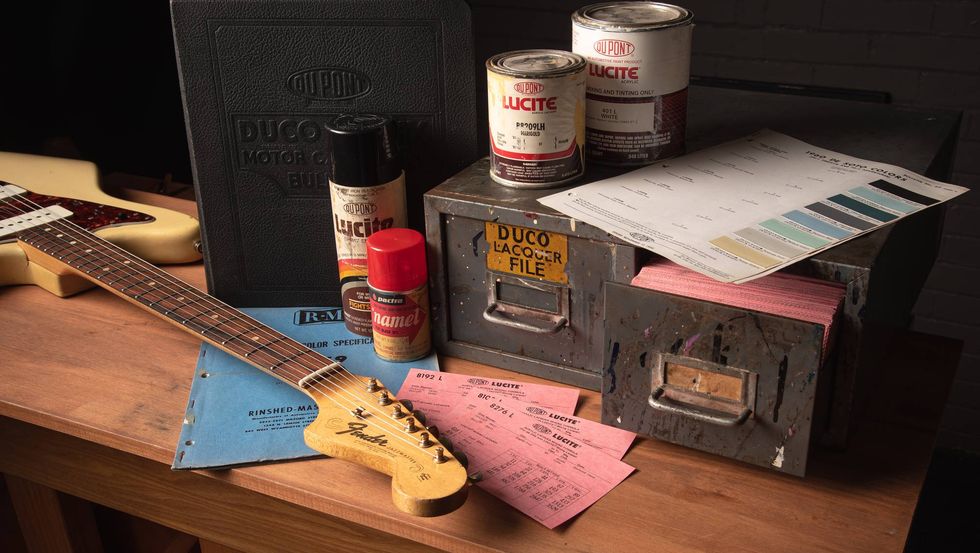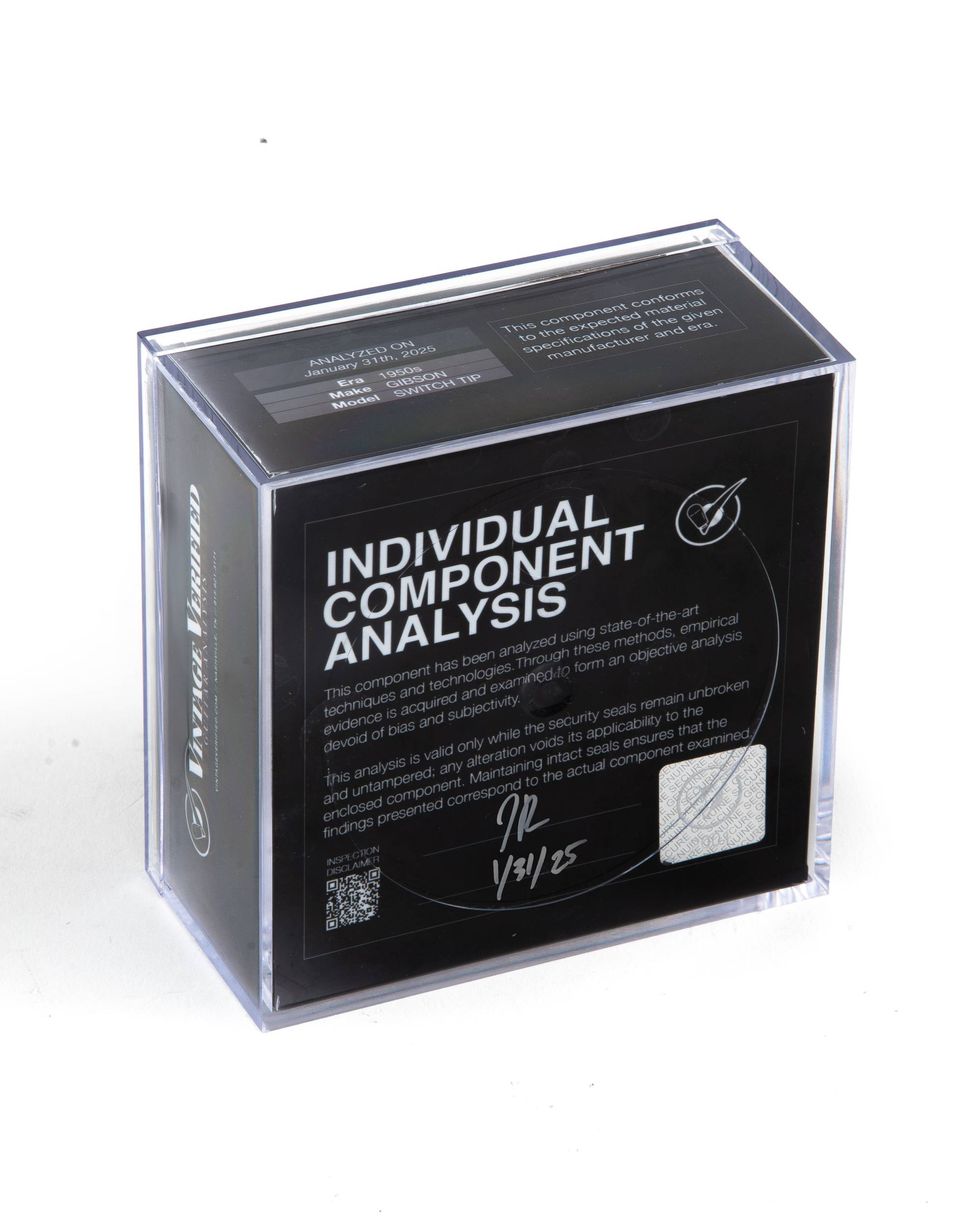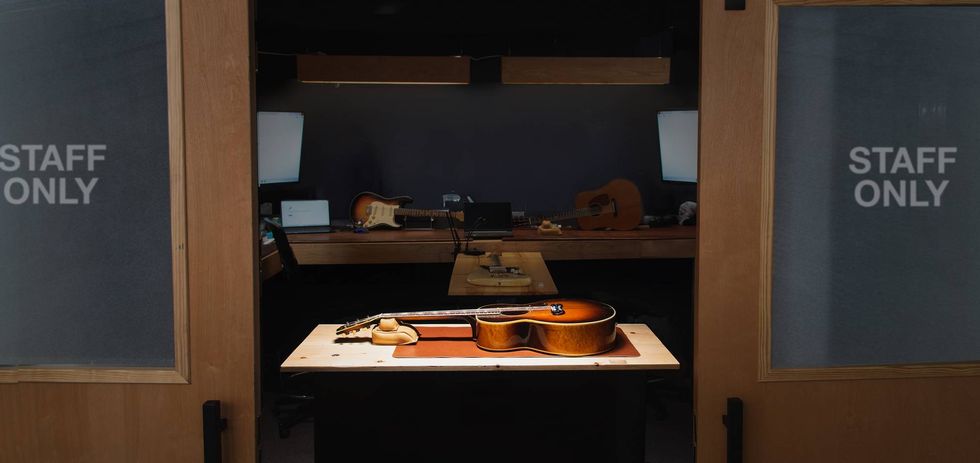Front: A 1962 Epiphone Emperor. This
stunning electric archtop was designed
to compete with Gibson’s Super 400.
Back: The Emperor’s body is 18" wide
across the lower bout.
Today Epiphone and Gibson are thought of as two divisions within the same company, but at one time they were competitors. In the 1920s and ’30s, this rivalry sparked the creation of the finest archtop guitars ever made. Epiphone traced its origins back to Greece, where the Stathopoulo family began making musical instruments in the late 1800s. The family immigrated to America in 1903 and continued building instruments in New York City. By the late 1920s the “House of Stathopoulo” became the Epiphone Banjo Company, named after the head of the family—president and general manager, Epi Stathopoulo. Under Epi’s leadership, the company maintained neck-and-neck sales with Gibson until Epi’s untimely death in 1943.
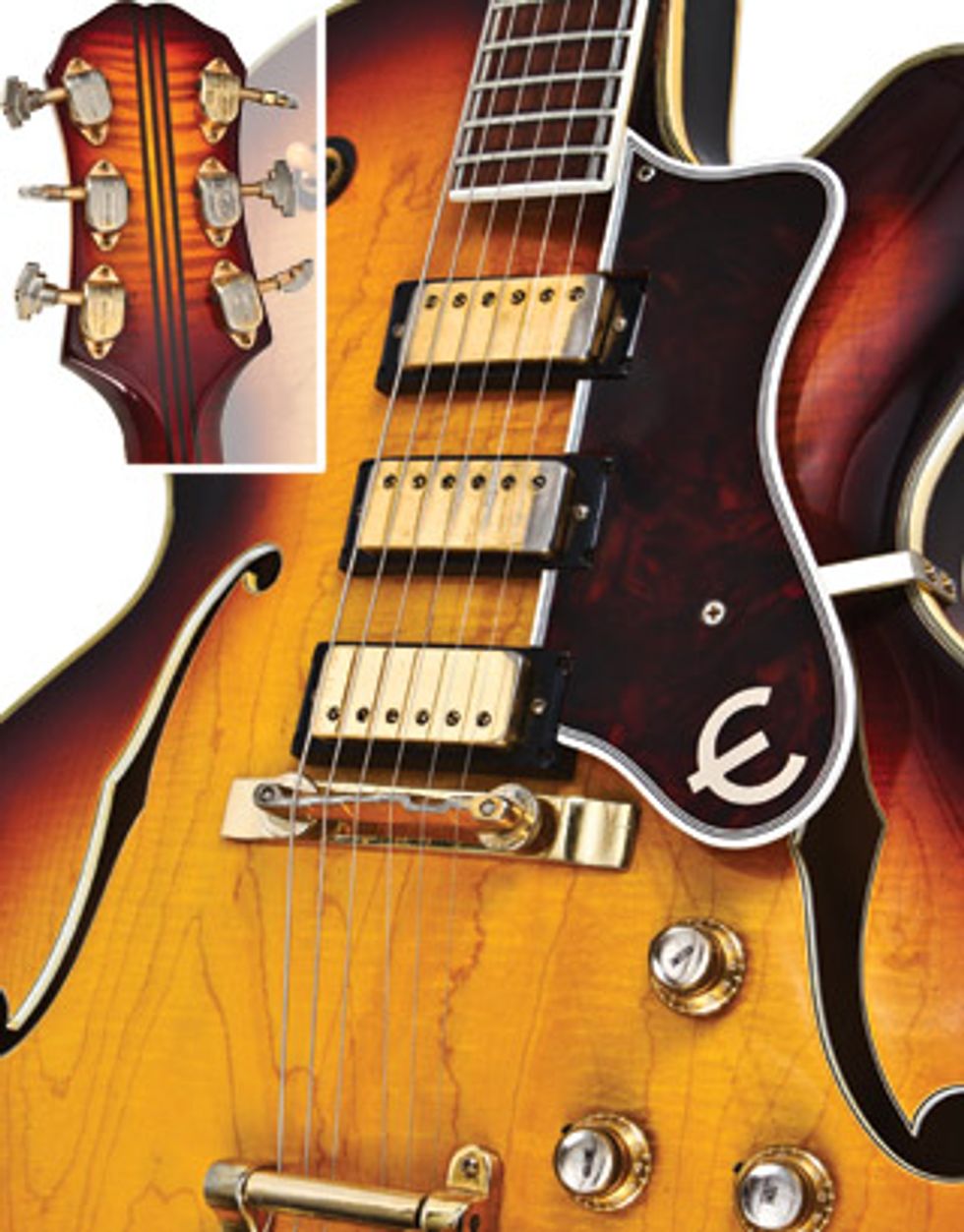
Below: Three mini-humbuckers offer a large palette of amplified tones. Above: The 4-piece maple neck is divided by three mahogany strips. Note the art-deco Grover Imperial tuners with their “stair-step” buttons.
Epi’s brothers continued on after his demise, but without Epi’s vision, the company’s influence declined. By the mid ’50s, Epiphone experienced financial problems leading to its eventual sale to Gibson in 1957. By 1958, production of new Epiphones began in Kalamazoo (existing Epiphone necks and pickups were used for a few years). The Gibson Epiphone line was made up of new and different models, accompanied by some familiar names, such as the Emperor.
Debuting in 1935 as Epiphone’s top-of- the-line acoustic archtop, the Emperor was originally the company’s answer to Gibson’s 18"-wide Super 400. By the 1950s, Epiphone was making a triple-pickup electric version. Originally called the Zepher Emperor Regent, this model name changed to Emperor Electric in 1954. Gibson continued to make an 18"- wide, triple-pickup Emperor Electric, but incorporated the new thinline body style used on Byrdlands and ES-335s.
The 1962 Emperor pictured here has typical features for that year, including a 4-piece maple neck divided by three strips of mahogany, a rosewood fretboard with V-block inlays, a “tree of life” pattern adorning the headstock, and three gold-plated mini-humbucker pickups.
The 1963 Epiphone price list reveals the Emperor cost $825, plus $60 for a hardshell case. The current value is $10,000.
You’ll find detailed information on Epiphone guitars and the fascinating story of the brand in Epiphone: The Complete History by Walter Carter, as well as Epiphone: The House of Stathopoulo by Jim Fisch and L.B. Fred.
Original price: $825 in 1963, plus $60 for
hardshell case.
Current estimated market value: $10,000.
Dave ’s Guitar Shop
Dave Rogers’ collection is tended by Laun Braithwaite and Tim Mullally and is on display at:
Dave’s Guitar Shop
1227 Third Street South
La Crosse, WI 54601
davesguitar.com
Photos by Mullally and text by Braithwaite.


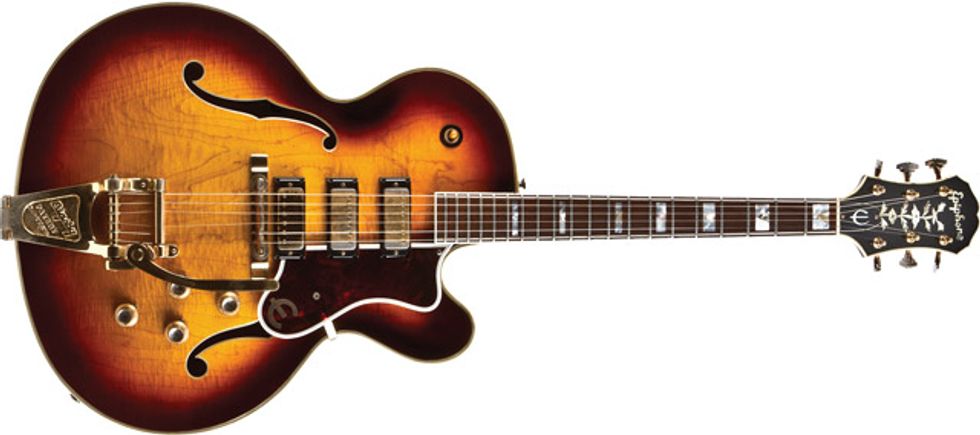
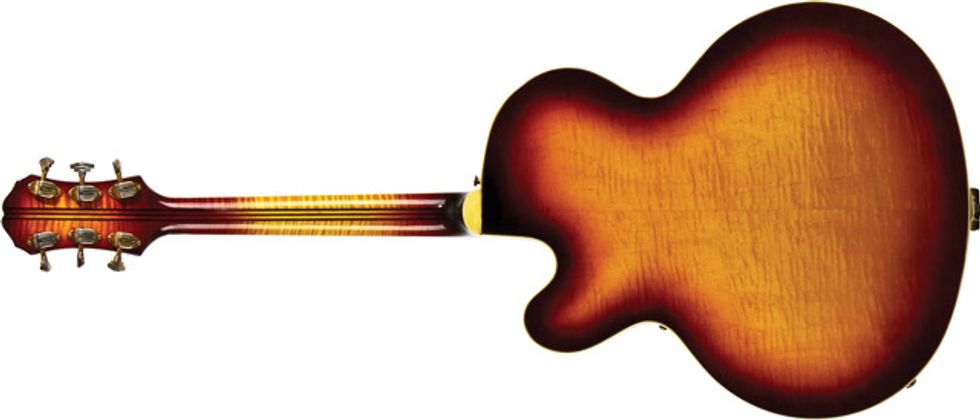










![Rig Rundown: Russian Circles’ Mike Sullivan [2025]](https://www.premierguitar.com/media-library/youtube.jpg?id=62303631&width=1245&height=700&quality=70&coordinates=0%2C0%2C0%2C0)

